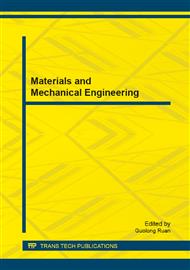p.61
p.70
p.77
p.83
p.87
p.94
p.101
p.107
p.112
Recycling and Synthesis of Li(Ni1/3Co1/3Mn1/3)O2 from Used Power Battery by Electrolytic Method
Abstract:
The Li(Ni1/3Co1/3Mn1/3)O2 cathode materials recover from used power battery synthesized using the electrolytic method to investigate its microstructure and electrochemical properties. The X-ray diffract ion (XRD) patterns of the prepared powders showed a hexagonal α–NaFeO2 structure (space group: R-3m, 166) and the existence of Li2MnO3 phase in the composite structure. The morphology of the prepared powders consisted of spherical agglomerates with particle size varying from 5 to 18μm. The size increased with increasing the spacing of titanium plate electrodes. The observed discharge capacity for the Li(Ni1/3Co1/3Mn1/3)O2 electrode (the spacing of titanium plate electrodes is 5, 7.5, 10 mm) for the first cycle was 167, 150, and 121 mAhg-1, respectively.
Info:
Periodical:
Pages:
87-93
Citation:
Online since:
February 2014
Authors:
Price:
Сopyright:
© 2014 Trans Tech Publications Ltd. All Rights Reserved
Share:
Citation:


